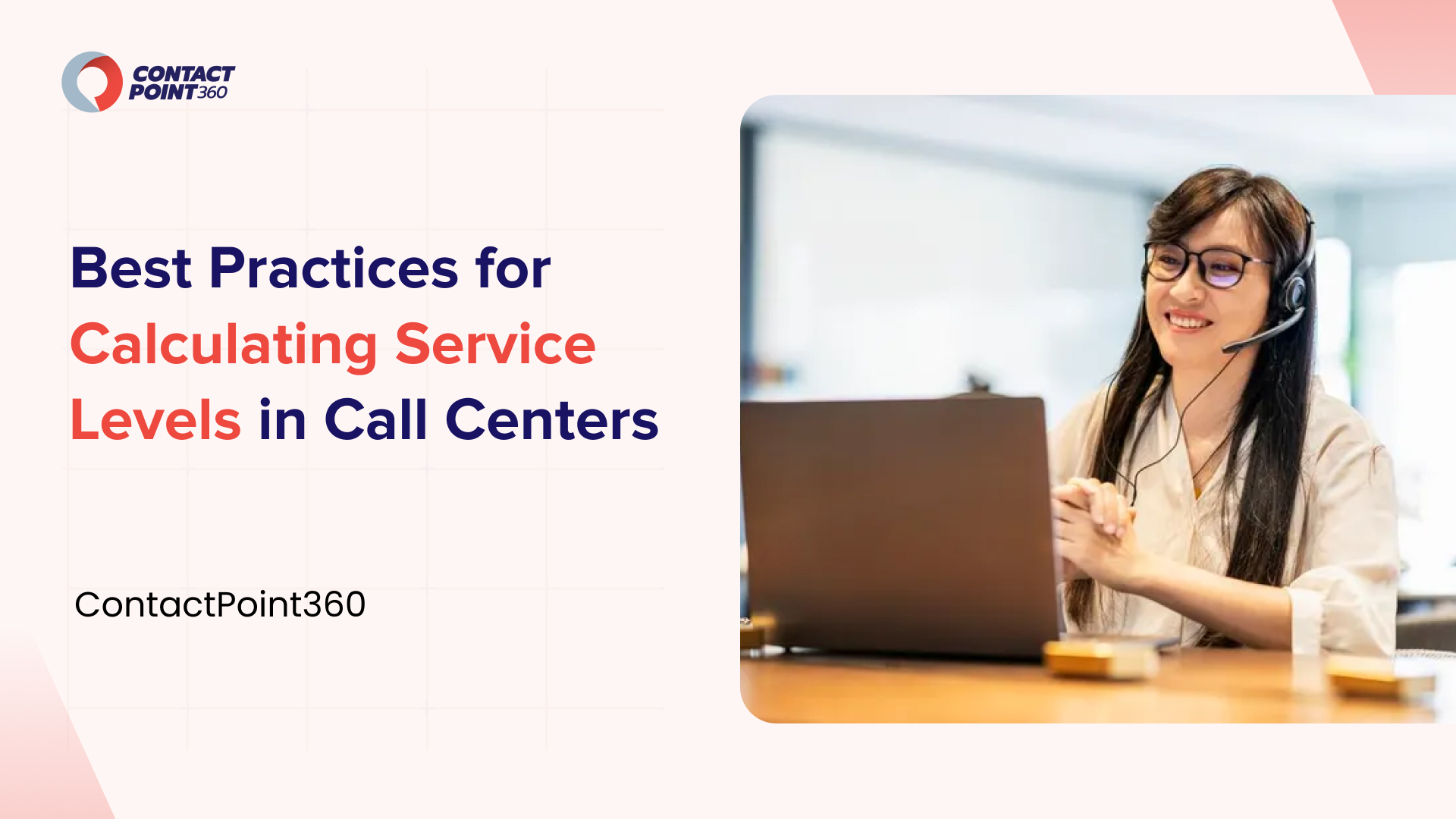What is the Service Level in a Call Center?
What is the Service Level in a Call Center?
What is the Service Level in a Call Center?
Service level in a call center is a performance metric that measures the percentage of incoming calls that are answered within a predefined time threshold. Typically, this threshold is expressed as a target response time, such as answering 80% of calls within 20 seconds. The call center industry commonly adopts an 80/20 service level standard. Achieving and maintaining satisfactory service levels is fundamental to delivering exceptional customer service and fostering positive interactions with callers.

To ensure optimal performance, call centers must adhere to best practices for calculating service levels. Let’s dive in to understand what the best practices are.
Best Practices for Calculating and Managing Service Level
Best Practices for Calculating and Managing Service Level

1. Establish Criteria to Categorize Abandoned Calls
Determine whether abandoned calls should be included or excluded from the service level calculation. While excluding abandoned calls may inflate service level metrics, it may not accurately reflect the caller experience. Conversely, including abandoned calls provides a more realistic depiction of call center performance but may result in lower service level percentages.
2. Set Parameters and Metrics for Time Frame Evaluation
Define the interval time for measuring service level, such as hourly, daily, or weekly intervals. Consistency in interval measurement ensures uniformity and facilitates accurate performance evaluation. Additionally, select appropriate performance metrics, such as average speed of answer (ASA) or percentage of calls answered within a specified timeframe, to gauge service level effectiveness.
Factors to consider when determining the start time include:
- When the caller chooses the ultimate option in IVR
- Upon the caller’s arrival at the ACD
- After the conclusion of “wait-queue” greetings
- At the predefined interval’s conclusion (e.g., five seconds after the caller enters the queue)
- Once the phone initiates ringing
3. Define Goals for Call Center Service Performance
Establish clear service level objectives that align with organizational goals and customer expectations. Determine the target response time and the desired service level percentage to strive for. Setting realistic and achievable objectives enables call center agents to focus their efforts on meeting performance targets and enhancing customer satisfaction.
4. Data Collection from All Sources
Gather comprehensive data from all relevant sources, including call logs, customer feedback, and performance reports. Utilize advanced contact center analytics tools to track and analyze call volume, handling times, and service level performance metrics. By leveraging data-driven insights, call centers can identify trends, patterns, and areas for improvement to optimize service level performance.
5. Harness Technology
Leverage technology solutions, such as workforce management systems and automated call routing, to streamline call handling processes and improve service level efficiency. Implementing advanced call center software enables real-time monitoring, call center forecasting, and scheduling of agent resources to meet fluctuating call demand and maintain optimal service levels.
Need higher service level accuracy?
Act for your proposal today!
6. Identify Factors Causing Slowdown of Service Level
Proactively identify factors contributing to service level slowdowns, such as understaffing, technical issues, or inadequate training. Conduct root cause analysis to pinpoint areas of inefficiency and implement corrective actions to address underlying issues. By addressing service level impediments promptly, call centers can mitigate disruptions and enhance overall performance.
7. Communicate Results
Foster transparency and accountability by communicating service level results and performance metrics to call center agents, supervisors, and stakeholders. Regularly share performance dashboards, scorecards, and trend analyzes to keep stakeholders informed and engaged. Encourage open dialogue and collaboration to brainstorm solutions and drive continuous improvement initiatives.
8. Take Appropriate Steps
Take proactive measures to address service level deviations and deviations from call center service level standards. Adjust staffing levels, optimize call routing strategies, or provide additional training and resources as needed to improve service level performance. By taking timely and targeted actions, call centers can mitigate service level risks and maintain high levels of customer satisfaction.
9. Adapt Strategies and Procedures as Necessary
Continuously monitor and evaluate service level performance to identify emerging trends and evolving customer expectations. Remain agile and adaptive in response to changing business dynamics and market conditions. Continuously refine and optimize service level processes to align with evolving customer needs and organizational objectives.
Conclusion
In conclusion, achieving and maintaining optimal service levels is paramount for call centers seeking to deliver exceptional customer service and drive business success. By implementing best practices for calculating and managing service level, call centers can enhance operational efficiency, improve customer satisfaction, and gain a competitive edge in today’s competitive marketplace.
Ready to elevate your customer experience and deliver exceptional customer service?
Get in touch with us at ContactPoint360 today to learn how our innovative contact center solutions and industry expertise can help you optimize service levels, enhance operational efficiency, and drive business success. Let’s partner together to excel in meeting customer expectations and unlock new opportunities for growth.
 United States
United States Canada
Canada Mexico
Mexico Colombia
Colombia Jamaica
Jamaica Philippines
Philippines India
India Egypt
Egypt




